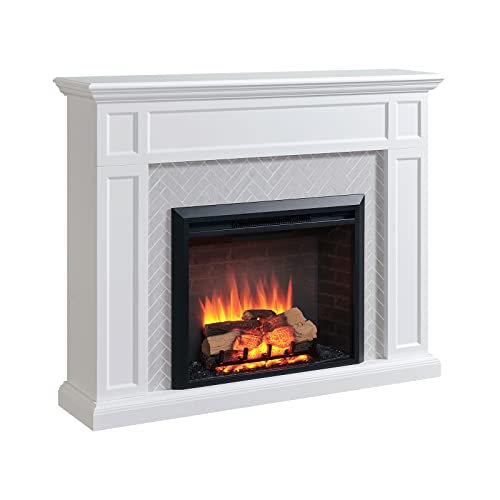Best Value Fireplaces: An In-Depth Guide
The fireplace has long been considered as the heart of a home, offering heat, atmosphere, and a centerpiece for celebrations. Nevertheless, browsing through different choices can be overwhelming, especially with spending plan restraints in mind. This short article provides an informative guide on the very best value fireplaces, detailing their types, functions, and benefits to assist homeowners make a wise choice.
Kinds of Fireplaces
Fireplaces are available in a range of designs and types, each with different attributes, expenses, and benefits. Here's an in-depth take a look at the most typical types of fireplaces offered in the market today.
| Kind of Fireplace | Description | Average Cost | Pros | Cons |
|---|---|---|---|---|
| Wood-Burning | Burn logs to produce heat and atmosphere. | ₤ 1,500 - ₤ 5,000 | Authentic experience, natural heat | Needs routine maintenance, less efficient |
| Gas Fireplaces | Utilizes gas or gas to produce heat. | ₤ 2,000 - ₤ 5,000 | Easy to utilize, cleaner than wood | Restricted to gas supply, setup expenses |
| Electric Fireplaces | Imitates flames with LED technology and produces heat via electricity. | ₤ 200 - ₤ 3,000 | Easy installation, setup flexibility | Less authentic feel, greater operating costs |
| Pellet Stoves | Use compressed wood or biomass pellets, offering an environment-friendly alternative. | ₤ 3,000 - ₤ 4,500 | Efficient, low emissions | Needs electrical power to operate, needs storage for pellets |
| Ethanol Fireplaces | Burns ethanol fuel, producing flames that don't need a chimney. | ₤ 300 - ₤ 2,500 | No vents required, portable | Higher fuel expense, security concerns |
Aspects to Consider When Choosing a Fireplace
Picking the ideal fireplace is not simply about visual appeals; it also includes practical considerations. Here are crucial aspects to keep in mind:
1. Spending plan
- Identify just how much you are willing to spend. Remember Elegant Fireplaces and upkeep costs can build up.
2. Area and Size
- Guarantee the fireplace fits well within the space, considering both the area available and the heating requirements.
3. Fuel Type
- Decide on the fuel source based upon accessibility, expense, and the type of ambiance you wish to attain.
4. Efficiency
- Select systems with high-efficiency rankings to guarantee you are getting the most value for your cash in terms of heat output.
5. Aesthetic Appeal
- Choose a style and style that complements existing design and boosts the general beauty of the space.
6. Regulations
- Know local regulations, allows, and building regulations that might affect your fireplace setup.
Top Best Value Fireplaces
Based on customer reviews, specialist opinions, and overall value for money, here are some of the very best value fireplaces presently readily available in the market:
1. DuraVent Pellet Stove
- Type: Pellet
- Typical Cost: ₤ 2,000
- Emphasizes: Highly efficient with low emissions, making it an outstanding alternative for environmentally-conscious homeowners.
2. Napoleon B36NTR-1
- Type: Gas
- Typical Cost: ₤ 2,500
- Emphasizes: This fireplace is visually enticing and highly efficient, with a streamlined design and adjustable flame.
3. Duraflame Electric Heater Stove
- Type: Electric
- Typical Cost: ₤ 200
- Highlights: Affordable and portable, perfect for smaller areas or including ambiance to a space without permanent installation.
4. Genuine Flame Juliet Gel Fireplace
- Type: Ethanol
- Average Cost: ₤ 300
- Emphasizes: An elegant option for modern areas that needs no venting, making it flexible and simple to set up.
5. Vogelzang VG5790
- Type: Wood-Burning
- Average Cost: ₤ 800
- Emphasizes: Offers a traditional wood-burning experience with a smooth modern style, ideal for those who cherish the timeless ambiance.
Regularly Asked Questions (FAQs)
Q1: What is the most economical fireplace choice?
A1: Electric fireplaces tend to be the most affordable in regards to preliminary purchase price and setup, however can have higher operating expense compared to gas or pellet systems.
Q2: Are gas fireplaces safer than wood-burning fireplaces?
A2: Yes, gas fireplaces generally produce fewer emissions and pose a lower risk of chimney fires as they don't produce creosote like wood-burning systems.
Q3: Can I set up a fireplace myself?
A3: While some electric fireplaces permit easy self-installation, other types, specifically gas and wood-burning designs, normally require expert installation due to venting and security issues.
Q4: How do I keep my fireplace?
A4: Regular upkeep includes cleaning up the chimney (for wood-burning fireplaces), looking for gas leakages (in gas systems), and making sure proper ventilation for electric designs.
Q5: Is an ethanol fireplace an excellent option?
A5: Ethanol fireplaces are appealing for their modern style and ease of setup. However, they can be less efficient and more expensive to run long-lasting compared to other fuel types.
Choosing a value fireplace that fulfills your visual preferences and useful requirements involves comprehensive research study and factor to consider. By understanding various types of fireplaces, their associated costs, and benefits, house owners can make informed decisions that will not just fit their budget plan however likewise improve the warm and welcoming atmosphere of their homes. Whether choosing an electric, gas, wood-burning, pellet, or ethanol model, the best fireplace awaits to transform your home.

